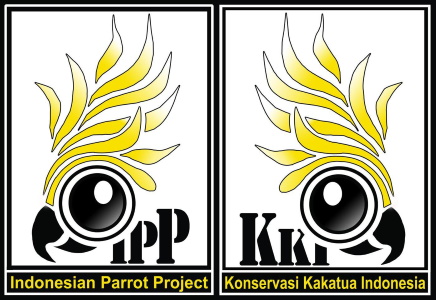A little-known and highly-endangered race of Indonesian Cockatoo
only 24 left in the wild
The Few. The Rare.
 Abbotti cockatoos (Cacatua sulphurea abbotti) were, and still are, one of the rarest and most threatened cockatoos in the world. They are now only found on Masakambing Island in the Masalembu Archipelago located deep in the Java Sea.
Abbotti cockatoos (Cacatua sulphurea abbotti) were, and still are, one of the rarest and most threatened cockatoos in the world. They are now only found on Masakambing Island in the Masalembu Archipelago located deep in the Java Sea.
The non-stop decline in their population reached a low of 5 individuals in 1997 and they were on the road to extinction. In October 2015, during our visit to Masakambing, we did not conduct a formal census, however the current population was estimated to be between 17 to 22 individuals.
The Indonesian Parrot Project (IPP) and Konservasi Kakatua Indonesia (KKI) have been actively working on this project since 2007 and have been very successful in working directly with the local community.
The cockatoos were first observed by William Louis Abbott in 1907, but it was not until 1919 that his description was published by Harry C. Oberholser, in the Proceedings of the U.S. National Museum “Notes on Birds Collected by Dr. W.L. Abbott in Various Islands in the Java Sea.” He noted that they existed in large populations in Masalembu – and were larger (tail length about 260 mm) than Cacatua sulphurea parvula are now (tail length 215-245mm), but this difference cannot be reliably used clinically to distinguish the two.
 The initial cause of their rapid decline in the early 1980’s was trapping. In an interview with two former leaders of Masakambing, we learned that fisherman from Sumbawa would visit the island and trap the cockatoos with gum using pet cockatoos as bait. Also, staff and visitors associated with oil exploration on the island took them as souvenirs. The birds were transported to Bali, Sulawesi and Sumbawa Islands. It was also reported that in the late 1980’s soldiers would shoot the birds to eat.
The initial cause of their rapid decline in the early 1980’s was trapping. In an interview with two former leaders of Masakambing, we learned that fisherman from Sumbawa would visit the island and trap the cockatoos with gum using pet cockatoos as bait. Also, staff and visitors associated with oil exploration on the island took them as souvenirs. The birds were transported to Bali, Sulawesi and Sumbawa Islands. It was also reported that in the late 1980’s soldiers would shoot the birds to eat.
The second aspect of the decline is attributed to loss of forest habitat. Forest had largely disappeared by the time of Abbott’s brief visit and currently only one square kilometer of uncultivated land remains on Masakambing Island. The birds went extinct on Masalembu.
Now fast forward to the 1990’s, when the first modern explorations to study this bird began. Studies in 1994 were carried out by Cahyadin, Jepson, and Arif and involved BirdLife International and the Indonesian government. Their report is available in English but is unpublished. In 1998, Elga Putra produced an extensive report about the Abbotti cockatoo for her thesis. However, it too is unpublished and in Indonesian.
History
 In 2006, a member of IPP had been invited to LIPI (the Indonesian Institute of Science) to discuss our projects. At a round table discussion afterwards, the rumor of a severe plight of the Abbotti cockatoo was briefly mentioned, though no further discussion ensued. Therefore, IPP enlisted the help of our colleagues Dudi Nandika and Dwi Agustina, leaders of KKI, to make an urgent trip to Masakambing to assess the current situation.
In 2006, a member of IPP had been invited to LIPI (the Indonesian Institute of Science) to discuss our projects. At a round table discussion afterwards, the rumor of a severe plight of the Abbotti cockatoo was briefly mentioned, though no further discussion ensued. Therefore, IPP enlisted the help of our colleagues Dudi Nandika and Dwi Agustina, leaders of KKI, to make an urgent trip to Masakambing to assess the current situation.
In 2007, the Indonesian Parrot Project began a dedicated program to reverse this trend using multiple approaches. This first required earning the trust of the village chief and villagers who in turn mounted a successful anti-smuggling campaign. This fact was to become especially important later on. The Program included passing the first true laws to protect Abbotti cockatoos and continuation of the “Conservation-Awareness-and Pride” (CAP) program for the schoolchildren on Masakambing, led by KKI.
CAP designed to stir the entire community’s excitement and participation in the program, and instill pride in “their” cockatoo—thereby giving hope that the conservation of the Abbotti cockatoo should last into future generations.
The Abbotti Cockatoos and the people of Masakambing need your help. We need to continue to present the CAP program to the new generations of students, military and police, and keep the local stakeholders involved by creating opportunities for sustainable income.
The Work

